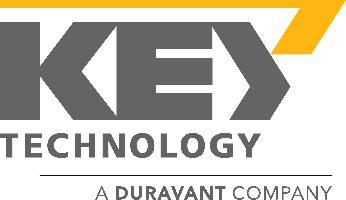The Duravant family of operating companies serve the food processing, packaging and material handling segments.
Challenges of Executing a Connected Factory Model
04/21/2022
The Connected Factory Model: A Gap Between Concept and Execution

A connected factory, also known as a smart factory, operates using digital technologies that provide real-time communications between the machines, the sensors, and the people employed by the manufacturing company. These technologies operate with cloud-based systems that allow for the assessment and analysis of the data collected.
While this is a fantastic idea, for many factories it remains only a concept, not a reality. The large-scale changes that have to be made to adhere to the connected factory model are daunting and can make proper execution difficult.
Many factories lack the unified language and communication, technological resources, and collaboration needed to turn the connected factory model from a concept to an effectively executed plan. Interested in the connected factory model? Here are some of the major obstacles facing modern manufacturers with this goal.
Lack of a Unified Approach
The connected factory model necessitates large-scale, seamless collaboration between companies across different industries. Because of this need for collaboration, the companies must put in the time to create a common language for protocols, processes, and training materials. This will ensure that communication is clear and free from misunderstandings as companies work together to create a connected factory.
There must also be complementary process frameworks, consistent protocols, and integrative equipment in the connected factory model. All of this synchronization and collaboration can be difficult at the organizational level, and the lack of a unified approach is what can cause a smart factory to fail.
Equipment Monitoring
The connected factory model requires a more advanced system for equipment monitoring. For example, a product like the HAMER Brand Model 540 Form Fill and Seal (FFS) Packaged Ice Machine would require an accessory like the Allen-Bradley MicroLogix PLC (programmable logic controller).
The PLC works to monitor and control the manufacturing process and can work in conjunction with human-machine interfaces and sensors to create a comprehensive equipment monitoring system.
Security
A connected factory can create increased equipment effectiveness and a more safe environment for employees, however, the security aspect poses several problems. Due to the cloud-based focus on the connected factory, cyberattacks by hackers can have devastating effects.
Smart factories have to authenticate and protect all of the communication between their sensors, machines, and employees. If a hacker tampers with the connected system, they can cause machine malfunctions that lead to injuries, steal intellectual property and manufacturing data, as well as interfere with the sensor's abilities to collect the correct data.
Due to these threats, a smart factory needs to have in-depth protocols for security personnel to follow in the event of a cybersecurity breach.
Project Visibility
Project visibility is the big-picture plan of a project. To have project visibility, there has to be a high amount of communication and the tracking of work completed.
In the connected factory model, where autonomy and technology are at the heart of the plan, high levels of project visibility (and the communication that involves) would take a long time to implement and perfect.
Supply Chain Visibility
Supply chain visibility is the ability to track the movement of products as they move from supplier to manufacturer and finally to the consumer. This involves the tracking of individual parts, partially assembled projects, and finished goods.
Having a high level of supply chain visibility in a smart factory involves programming the sensors, training employees, and developing a cloud-based tracking system for each of the parts used in the products created by the factory.
Skill Gaps
With a potential skills gap of 2.1 million unfilled jobs by 2030, many people in the manufacturing industry are wondering how they can implement the connected factory model. Manufacturing employees in a connected factory need to be able to:
- Write and understand code.
- Operate with a high level of digital fluency.
- Understand the basic tenets of robotics.
- Analyze data brought in by the sensors.
One of the defining characteristics of connected factories is their autonomy. They can run with little human intervention. This means that the people who are hired to these factories will have to be able to solve high-level technical problems and use critical thinking skills.
Potentially connected factories would need to implement ongoing, continuous education strategies to help current employees develop the skills necessary to effectively run a smart facility.
Data Islands
A data island is a collection of data that has little to no external connectivity. This can pose a huge problem for the implementation of the connected factory model. The presence of data islands is common in the manufacturing industry. Information regarding different topics has been separated and isolated over the years.
However, for a smart factory to function, all data must be available to the sensors, computer systems, and employees so that the factory can run autonomously and in the most efficient way possible.
Legacy Infrastructure
Legacy infrastructure presents a unique problem for a potential connected factory. In manufacturing, legacy systems are created with outdated technology. This technology technically serves its purpose, but does not lend itself to any further adaptation and development.
If a company has too much legacy infrastructure in its current model, then the costs of establishing the connected factory model will be even higher due to the amount of new equipment that will need to be purchased.
Additionally, employees would need to be trained to operate all of the new equipment and to understand how that equipment fits into the overall structure of the connected factory model.






